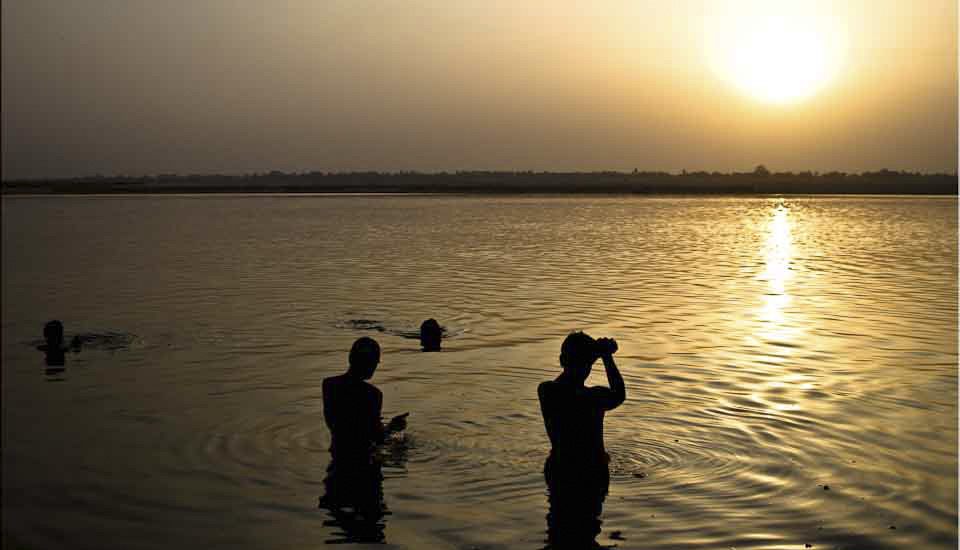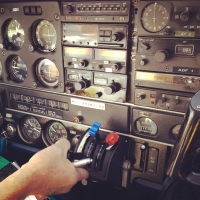.jpg)
Young Boy in Face Paint and Bird Feathers
The children along the mighty Sepik River in central Papua New Guinea take joy and pride in following the cultural traditions of their small communities.
If you are like me – or, indeed, like the majority of people in the modern world – you spent most of your childhood in a standardised classroom.
Schools are so “alike” all around the world that it is hard to remember that it wasn’t always this way: for hundreds of thousands of years, children educated themselves through self-directed play and exploration, and learned the ways of their “tribe” or community by working alongside their elders. Cultural traditions were passed down through the oral media of story-telling, dance, song, and sometimes art and artefacts. The world-history of formal education is closely tied to literacy; societies without written language had little need for formal classrooms.
Today, measures of adult literacy are used to assess the economic success of a community. As such, Papua New Guinea, with a literacy rate of just over 64%, falls behind all its neighbours in Oceania. School attendance (63%) is the lowest in the Asia and Pacific region, and only one in three children complete their basic education. Since 2012, schooling from age seven has been tuition-free and conducted in local language up to middle school, but it is not compulsory. About half of primary school-aged children don’t attend, which is attributed to geographic distance from school, lack of security, and lack of parental support for formal education. Almost 30% of schools are run by churches that do not necessarily reflect the indigenous belief structures.
Of course, as is the case with most types of “development” or “modernisation” in traditional communities, formal education is a double-edged sword: it gives people access to opportunities outside their immediate environments, but risks alienating them from their heritage and roots. Papua New Guinea’s constitution declares the desire for traditional villages and communities to continue to function as viable units of society. Balancing educational outcomes with the needs of more than 820 language and cultural groups is a big ask!
I didn’t see any schools during my time in the remote Middle Sepik region of Papua New Guinea. I had journeyed the two-days of plane-, bus- and boat-travel required to access the region from Port Moresby. I was with a small group of intrepid photo-enthusiasts and photographer Karl Grobl from Jim Cline Photo Tours, and was staying in the small, but important, village of Kanganaman: a village of simple stilted bamboo huts with no electricity or running water; a village comprising not one, but two spirit houses (see: Welcome to the Spirit House), but lacking a school. The river is the area’s lifeline, and those children who attend school probably do so by boat.
I was there to enjoy the newly-developed Sepik River Festival (established 2014) and was really pleased to see so many children enthusiastically involved in the traditional story-dances. Through their participation in their clan’s activities, they were learning the fundamentals of their cultural history.
Come join me (and them!) at the dance.
.jpg)
Dancing around the Cassowary
On the green in front of the Little Spirit House, the village women and children dance around the totem cassowary.
.jpg)
Child Watching
The children who are not dancing watch the performers with rapt attention.

Face Paint and Betel Nut
Many youngsters in PNG start chewing the ubiquitous areca nut-tobacco mix from a very early age, …

Betel Nut Smile
… and their teeth and lips show the effects.

Cassowary Dancers
The women and children dancing with the cassowary totem continue their circuit of the village …

Solemn Child in Face Paint
… as other performers watch on.

Face Paint and Greenery

Face Paint and Green-Leaf Headband
There is quite a variety of paint and headdress styles.

Cassowary Dancers
As the cassowary dancers continue …

Crocodile Men and Boys
… men with crocodile scarification, wearing crab-claw flower necklaces and feathered headdresses, are gathered in another quadrant of the green.

Dancers on the Green
It is all very informal, as local spectators and tourists mix in with the clumps of dancers, …

Little Girl-Child
… and participant children wander in …

Girl on the Green
… and out of the dances.

Woman in the Dance

Boy on the Garamut (Slit Drum)
Everywhere I look, youngsters are being given a turn.

Wild-Duck Woman
A “wild duck” sounds innocuous enough as a totem, but even on the women, the face paint is frightening!

Wild Duck Women
I’m not sure which is more disconcerting: the straight face or the betel-nut smile!

Bow and Arrow
One of the the most popular dances with the local audience seemed to have a story attached.

Snake Head
Behind the leader with the bow and arrow, there followed a creature with a small crocodile (or large snake?) head and a rope-like body.

Bird Masks
Many of the dancers wore masks with bird-like beaks, as the creature wove its way around the green, threatening to attack people. The audience was in fits of laughter.

Women’s Skirts Flying
The singing, dancing, and drumming continues long into the afternoon.

Local House
The locals who are not dancing gather in the patchy shade around a typical house, with their wares laid out for sale. They seem unaffected by the heat – which (to me) is oppressive.

Drumming
In a flail of leaf fronds, the drumming continues …

Drumming and Dancing
… and the dancers keep time.

Wild Duck Man

Group Shot
After a day of heat and exertion, much of the face- and body-paint has worn off. Tired, but elated, one of the groups pauses to have their picture taken together …

Walking Home
… before people head home through the jungle.
It was wonderful watching the performers of all ages, but especially the youngsters practicing their stories. Hopefully, they can integrate this traditional learning with a meaningful path forward.

Until next time,
Here’s to their Future!
Pictures: 14August2017






























.png)

